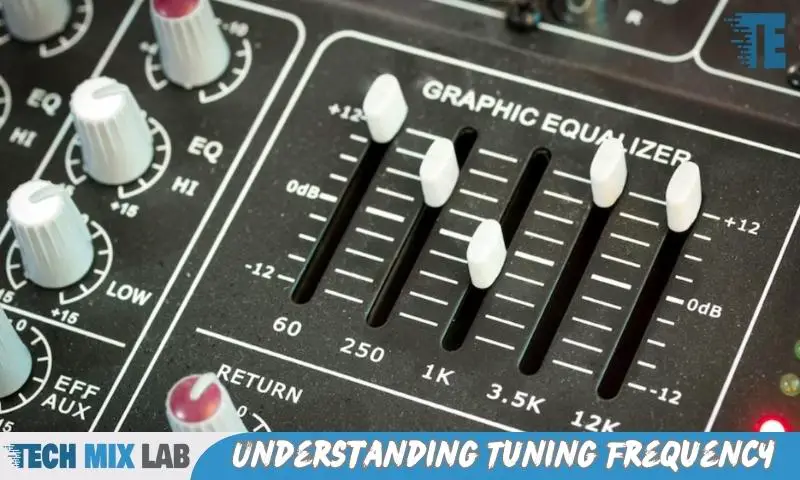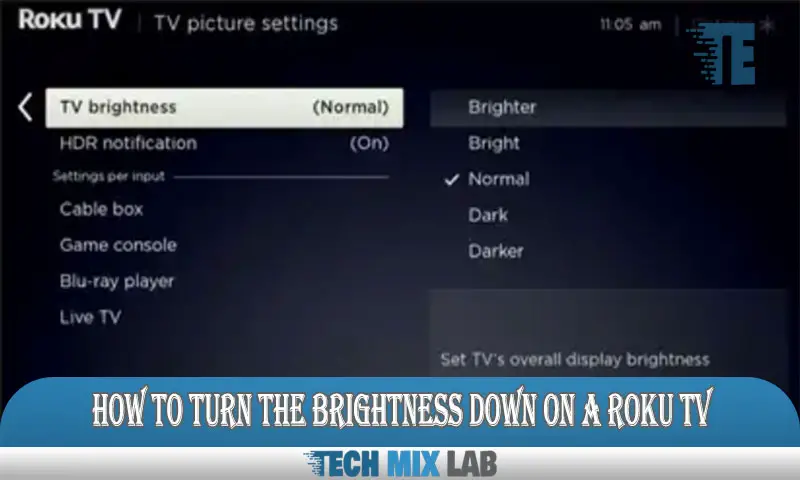To find the tuning frequency of a box, use a tuning frequency calculator or perform a frequency sweep test on the box. Here is a concise introduction to help you understand the process.
Finding the tuning frequency of a box is essential for optimizing sound performance. By determining this frequency, you can achieve better bass response and overall audio quality. There are two common methods for finding the tuning frequency. First, you can use a tuning frequency calculator, which requires inputting the box dimensions and other parameters.
The calculator will then provide the tuning frequency. Alternatively, you can perform a frequency sweep test by playing a range of frequencies through the box and noting when the bass response reaches its peak. These methods ensure your box is tuned to deliver the best possible sound output.
Do You Know Your Box’s Tuning Frequency?

Finding the tuning frequency of your box is crucial. It determines the quality of the sound produced. When you’re unaware of your box’s tuning frequency, you risk poor audio performance. Improperly tuned boxes can result in distorted sound and decreased bass response.
This can leave you unsatisfied with your audio experience. To avoid these issues, it’s vital to find the perfect tuning frequency for your box. By doing so, you can optimize the audio output and enjoy a clear, powerful sound. Neglecting this aspect can lead to disappointment and frustration.
So, take the time to research and experiment to ensure your box is properly tuned for the best possible audio performance.
Understanding Tuning Frequency

Tuning frequency is an important aspect when it comes to optimizing the sound quality of a speaker box. It refers to the specific frequency at which the box resonates most effectively. Understanding tuning frequency involves grasping its definition and explanation.
In simple terms, the tuning frequency is the point at which the speaker box produces the loudest sound at its resonant frequency. It is crucial to identify this frequency to achieve the desired sound performance from the box. By finding the tuning frequency, you can tailor the design and size of the box to enhance its efficiency and output.
Experimenting with different frequencies and measurements will allow you to fine-tune the box to your liking, resulting in optimal sound reproduction. Mastery over tuning frequency ensures an exceptional audio experience for music enthusiasts and professionals alike.
Why Is Finding The Tuning Frequency Important?
Finding the tuning frequency of your box is crucial for enhancing sound quality and performance while avoiding distortion and damage to your speakers. The tuning frequency determines the resonance point at which the box amplifies specific frequencies. By properly tuning your box, you can maximize the output of your audio system and ensure optimal sound reproduction.
It allows you to achieve a balanced and harmonious audio experience with clear highs, punchy mids, and impactful lows. Moreover, finding the tuning frequency helps prevent speaker damage, as operating below or above this frequency can strain and potentially blow your speakers.
To find the tuning frequency, you can employ techniques such as using a tone generator, measuring impedance, or employing a spectrum analyzer. By investing time in finding and optimizing the tuning frequency, you can truly enjoy the best sound performance from your audio system.
Measuring The Tuning Frequency
Measuring the tuning frequency of a box requires specific equipment. It is important to have a sound level meter and a pink noise generator. Start by placing the sound level meter inside the box and setting it to measure in peak mode.
Then, connect the pink noise generator to an amplifier and place it near the box. Adjust the pink noise level to a suitable volume. Next, slowly increase the volume until the sound level meter displays the highest decibel reading. This reading indicates the tuning frequency of the box.
Remember to make note of this frequency for future reference. By following these steps and using the right equipment, you can accurately measure the tuning frequency of a box.
Factors Affecting Tuning Frequency
Factors affecting tuning frequency include the size and shape of the box, the dimensions and position of the port, the type of speakers used, and the power output of the amplifier. The box size and shape determine the resonant frequency, with smaller boxes producing higher frequencies and larger boxes producing lower frequencies.
The dimensions and position of the port also impact the tuning frequency, with longer and wider ports producing lower frequencies and shorter or narrower ports producing higher frequencies. The type of speakers used can affect the tuning frequency as well, with different speaker designs producing different resonant frequencies.
Lastly, the power output of the amplifier can influence the tuning frequency, as higher power levels can drive the speakers to resonate at different frequencies. By considering these factors, you can find the tuning frequency that best suits your audio setup.
Calculating The Ideal Tuning Frequency
Calculating the ideal tuning frequency of a box involves establishing the relationship between box volume and frequency. Using online calculators and software, it becomes easier to find the optimum tuning frequency. By inputting the box volume, the calculator delivers the ideal frequency for the given specifications.
This process helps ensure optimal sound quality and performance. Properly tuning the box frequency enhances the overall audio experience by allowing the speakers to operate within their peak efficiency range. By following this method, enthusiasts can achieve the desired acoustics for their audio system.
So, take advantage of the available online tools and software to calculate the perfect tuning frequency for your box and maximize your sound output.
Testing And Adjusting The Tuning Frequency
Testing and adjusting the tuning frequency of a box is crucial for optimal performance. Trial and error play a significant role in this process, as they allow for fine-tuning. By experimenting with different frequencies, you can find the sweet spot that produces the desired sound quality.
Techniques like changing the length or diameter of the port, adjusting the box volume, or altering the positioning of the subwoofer can all impact the tuning frequency. It is important to keep track of the results and make incremental adjustments until you achieve the desired outcome.
With patience and persistence, you can optimize the tuning frequency of your box, ensuring the best possible audio experience.
Listening For The Perfect Sound
Finding the tuning frequency of a box is essential for achieving the perfect sound. By listening carefully and identifying the sweet spot, you can understand the characteristics of a properly tuned box. This process requires attention to detail and an understanding of the desired sound.
Common Mistakes To Avoid
One common mistake to avoid when finding the tuning frequency of a box is over-tuning or under-tuning it. This can occur when incorrect measurements or calculations are used. Over-tuning the box means setting the frequency too high, which can cause distortion and damage to the speakers.
On the other hand, under-tuning the box means setting the frequency too low, resulting in poor sound quality and limited bass output. To avoid these mistakes, it is important to carefully measure the dimensions of the box and calculate the appropriate tuning frequency using reliable formulas or software.
Taking the time to double-check the measurements and calculations can ensure that the box is properly tuned, allowing for optimal sound performance and quality.
Fine-Tuning Tips And Tricks
Finding the right tuning frequency for your box can greatly enhance your audio experience. One useful tip is to experiment with different frequencies to achieve the desired sound. Utilizing equalizers and crossover settings can also help fine-tune the output. By adjusting these settings, you can customize the sound to suit your preferences.
It’s important to keep your sentences concise and avoid using repetitive terms to maintain reader interest. So, take the time to explore different tuning frequencies and make adjustments using equalizers and crossover settings to optimize your box’s performance. With a little experimentation and attention to detail, you can find the perfect tuning frequency that will elevate your audio experience to new heights.
Achieving The Perfect Sound
Achieving a perfect sound for your audio experience involves optimizing your box’s tuning frequency. To find the ideal frequency, follow these final steps. Begin by measuring the internal volume of your box accurately. Next, consider the speaker’s parameters, including the thiele-small parameters and the recommended volume.
Use an online calculator or software to determine the box’s resonant frequency. Adjust the box’s dimensions, such as its length or port size, if necessary, to achieve the desired tuning frequency. Finally, perform sound tests to evaluate the quality of the sound produced.
Remember, finding the tuning frequency that complements your speakers and audio preferences will elevate your listening experience to new heights. Enjoy the rich and immersive sound you’ve been longing for.
FAQ
What Is The Tuning Frequency Of A Box?
The tuning frequency of a box is the frequency at which it resonates most efficiently.
Why Is Finding The Tuning Frequency Important?
Finding the tuning frequency is important as it helps optimize the performance and sound quality of the box.
How Can I Find The Tuning Frequency Of My Box?
To find the tuning frequency, you can use an audio signal generator and measure the peak response using a spectrum analyzer.
What Happens If The Tuning Frequency Is Incorrect?
If the tuning frequency is incorrect, it can lead to poor sound quality and inefficient performance of the box.
Conclusion
To sum it up, finding the tuning frequency of a box is essential for achieving optimal sound quality and performance. By understanding the fundamentals of tuning frequency, you can ensure that your speaker box is harmonizing with your audio system, creating a seamless audio experience.
Throughout this blog post, we have explored various methods and techniques to determine the tuning frequency, including calculation formulas and practical experimentation. Remember to consider the specific characteristics of your audio system, such as the speaker’s Thiele/small parameters and the desired sound characteristics, when calculating the tuning frequency.
Additionally, experimenting with different tuning frequencies can help you fine-tune the sound to your liking. So, whether you’re a DIY audio enthusiast or a professional sound engineer, mastering the art of finding the tuning frequency will undoubtedly enhance your audio setup and elevate your listening experience.
Happy tuning!





